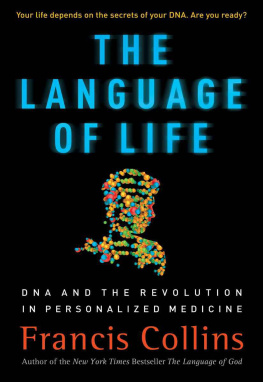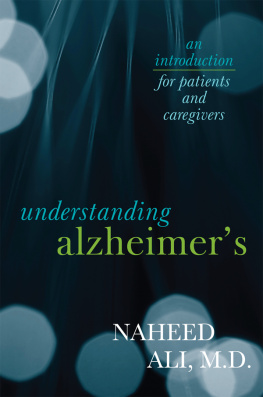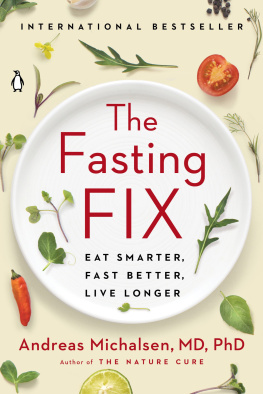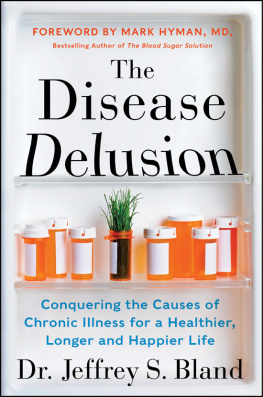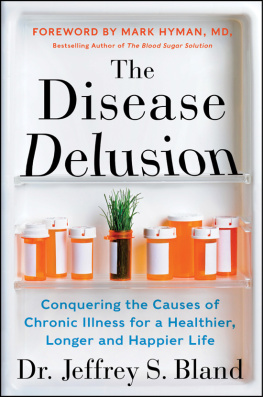The Language of Life
DNA and the Revolution in Personalized Medicine
Francis S. Collins

To my many wonderful teachers: mentors, colleagues, patients, and families
Contents
Were Not in Kansas Anymore
The Future Has Already Happened
When Genes Go Wrong, It Gets Personal
Is It Time to Learn Your Own Secrets?
Getting Personal with the Big C
Whats Race Got to Do with It?
Genes and Germs
Genes and the Brain
Genes and Aging
The Right Drug at the Right Dose for the Right Person
A Vision for the Future
Glossary
Genetics 101
A Brief Personal History of the Human Genome Project
Rational Drug Development
Services Provided by Direct-to-Consumer Genetics Companies Offering Broad-Spectrum Testing
Were Not in Kansas Anymore
The tearful young man was on the phone with his uncle. My mother is dying. Shes in a coma, and I dont think shell make it through the night. Surrounded by the drone of whirring centrifuges and students conversation about the previous nights lab party, Dr. Robert James moved to a quiet spot where he could speak privately to his distraught nephew.
Im so sorry, Brad, he said. Your mother truly fought a valiant battle against ovarian cancer, and she rallied so many times when it seemed that all was lost. But it sounds as if this is really the end. What can I do to help?
Well, said his nephew, my sister and I have been worrying about whether her cancer might be hereditary, given all of the other women on her mothers side who suffered from breast cancer or ovarian cancer. You once told us that someday there might be a test to determine whether one or both of us had inherited her cancer risk. If thats true, is it too late to pursue this?
Dr. James explained how to proceed. A blood sample from his dying sister-in-law was shipped to Dr. Jamess lab the next day, DNA was prepared, and the sample was carefully stored in the freezer. He thought it was unlikely this would ever be useful, but at least it was something to do.
Five years later, Brads sister Katherine contacted Dr. James, explaining that she had been reading articles in the popular press about the discovery of genes involved in hereditary breast and ovarian cancer. Katherine had been having yearly mammograms, even though she was only in her thirties, but she was particularly concerned that there were no good screening tests available for detecting early ovarian cancer. Her mother had originally been diagnosed with this cancer at 52, and Katherine thought every day about her own potential for developing it.
Dr. James confirmed that the discovery of genes known as BRCA1 and BRCA2 might well make it possible to be more precise about the risk of cancer in the family, if it turned out that Katherines mother carried a mutation in one of these genes. Concerned about the risk of losing her health insurance if she tested positive, Katherine wanted to know whether there was some other way to get the information. Her uncle told her about a clinical research study in a nearby city that allowed testing under an assumed name, and Katherine decided to proceed. After genetic counseling about the risks of knowing or not knowing this information, Katherine requested that the DNA sample on her mother, carefully stored for several years in the freezer in Dr. Jamess laboratory, be forwarded to a testing facility.
A few weeks later Katherine called Dr. James to report that a significant BRCA1 mutation had been found in her mothers DNA. Katherine faced a 50 percent risk of having inherited that misspelling, in which case her lifetime risk of breast cancer would be approximately 80 percent, and that of ovarian cancer about 50 percent. Katherine was deeply concerned about herself, but even more so about her six-year-old daughter.
She spent two weeks waiting for her own results, and it seemed like an eternity. She tried to imagine what she would do with a positive result. Would she approach a surgeon about removing her ovaries? Would she even contemplate removing both breasts and undergoing surgical reconstruction, as many women with mutations in BRCA1 or BRCA2 have done? What would she tell her daughter, and at what age should her daughter be tested? Some days she was certain the test would be positiveafter all, everyone remarked how much she looked like her mother. On other days, she remembered that such information was irrelevant to the possibility of her carrying this specific genetic glitch, and she was more hopeful.
The fateful day arrived when a phone call from the genetic counselor invited Katherine to come to the clinic to hear the results. With her heart in her mouth, she sat across the desk as the counselor opened the file and then broke into a smile. Katherine, she said, I have good news. You have not inherited the BRCA1 mutation carried by your mother. Your risk of breast and ovarian cancer is no greater than that of the average woman of your age, and your daughter likewise carries no special risks for these diseases.
Overjoyed, Katherine called her uncle to share this happy moment. But both of them confessed to remaining uneasy about other maternal relatives in Canada and Europe, and about Katherines brother, Brad, who had chosen not to be tested. Although males with mutations in BRCA1 and BRCA2 face only a slightly increased risk of cancer of the prostate, pancreas, and male breast, their daughters may still be at high risk of breast and ovarian cancer if theyve inherited the mutation. Brads young daughter now became the remaining member of this nuclear family with a potential genetic cloud over her.
Dr. James is a physician who has devoted his professional life to research on molecular genetics, so it was ironic that his own family turned out to be affected by one of the more dramatic discoveries in hereditary disease of the past decade.
But then it happened again. This time, it was his father-in-law, Fred, now in his late seventies, who contacted Dr. James about a medical evaluation. Fred had noticed some discomfort in his legs and a deterioration in his golf game and, after an initial evaluation by his primary physician, had been referred to a neurologist.
Fred was calling to say that the neurologist had detected some slowing of nerve conduction in his legs, and was suggesting that Fred should be tested for an uncommon genetic condition known as Charcot-Marie-Tooth disease, named for the three French investigators who originally identified it. Dr. James was initially appalled at the idea of such testing, since Charcot-Marie-Tooth disease was generally associated with progressive weakness in the legs beginning in the twenties and thirties. Thinking that a genetic test for this condition in an elderly man would be essentially a waste of time and money, Dr. James nonetheless did not voice an objection to this plan, since he didnt want to interfere with his father-in-laws medical evaluation. To his amazement and consternation, the test was positive. After more study of the problem and discussion with the experts, it began to make more sense. Until DNA testing was made available, Charcot-Marie-Tooth disease had been purely a clinical diagnosis. So of course the cases that were discussed in textbooks and medical journals tended to be those with a more severe course. Now that the gene had been identified and could be spotted by a specific molecular test, it was becoming apparent that a milder disease, including the remarkably late onset presented by Fred, was more common than had been appreciated.
This time the diagnosis struck even closer to home. Charcot-Marie-Tooth disease is a dominant condition, and this means that the child of an affected individual has a 50 percent chance of inheriting the abnormal gene and also being affected. Thus Dr. Jamess wife, Dawn, as well as her brother and sister, might be significantly affected by this discovery in the future. In fact, it wasnt just a matter of the future; it was also about the past and the present. Dawns sister, Laura, had long struggled with what had been assumed to be a congenital problem with her feet and ankles. Blamed on club feet, but never definitively diagnosed, this problem now appeared likely to be a consequence of a particularly early manifestation of the same genetic disease that had appeared so late in her father. Here was a chance to provide a definitive diagnosis. Yet Laura decided not to be tested. She was not convinced that the information would change anything, and she was a cynic about health care. She had had several frustrating experiences over the years with orthopedic interventions that were supposed to help her chronic foot problems but didnt really provide much relief. She respected her brother-in-law, Dr. James, but not the system.

